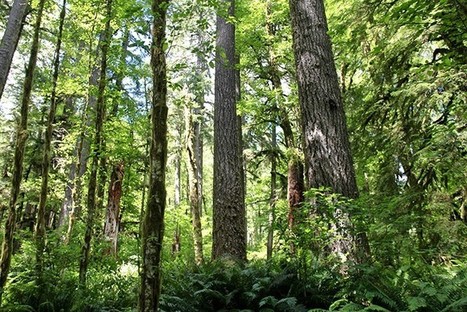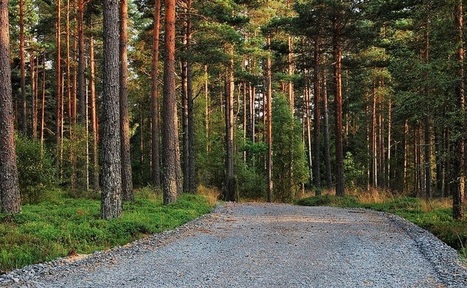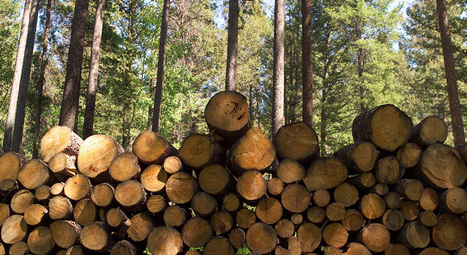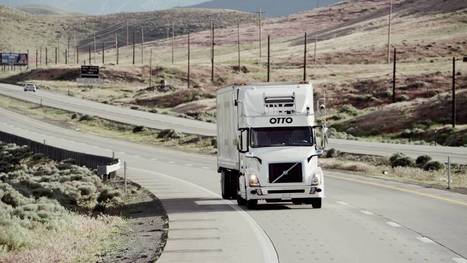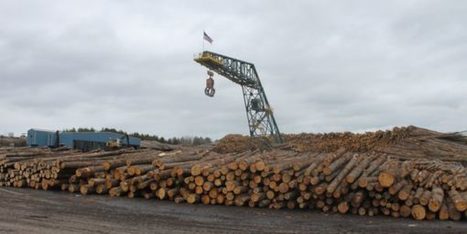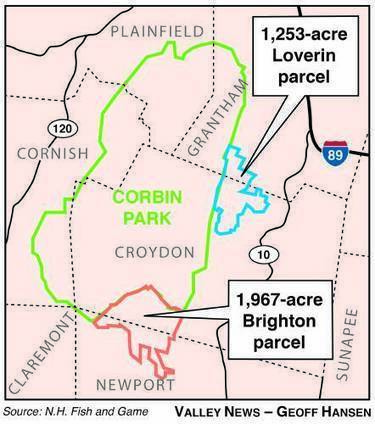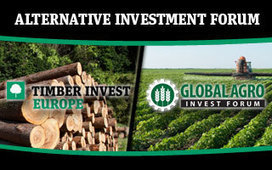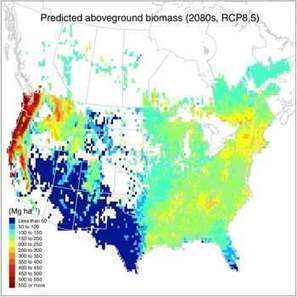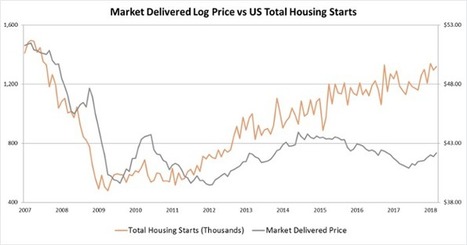 Your new post is loading...
 Your new post is loading...

|
Scooped by
Prentiss & Carlisle
August 2, 2018 4:54 PM
|
The Oregon Court of Appeals ruled today that the 2014 sale of the 788-acre East Hakki Ridge tract on the 93,000-acre Elliott State Forest east of Coos Bay was illegal. The ruling, which overturns the sale of the public land to a private timber company, marks a major win for the state’s public lands. “This is a huge victory for public lands enthusiasts who were locked out of the forest after the state of Oregon recklessly sold this tract to the timber industry,” said Josh Laughlin, executive director of Cascadia Wildlands and an individual plaintiff in the case. “Privatizing public land would have been a disaster for imperiled salmon and wildlife that rely on clean water and old forests to survive.” Cascadia Wildlands, Audubon Society of Portland and Center for Biological Diversity brought the lawsuit under an Oregon law, ORS 530.450, which states that it is illegal to sell the Elliott State Forest. State officials defended their decision to dispose of the parcel in court saying the State Land Board should not be required to follow the law. “The decision by the state to sell off portions off the Elliott State Forest and avoid its legal obligations to protect imperiled marbled murrelets and the forests in which they depend was fundamentally flawed from the start,” said Bob Sallinger, conservation director for Portland Audubon. “It is now time for the state to step up and manage this amazing forest in a way that truly protects murrelets, spotted owls, coho salmon and other species that depend on our older forests.”
***
Sold to Seneca Jones Timber Company, the East Hakki Ridge parcel was one of a handful of forested tracts the state sold to the timber industry in 2014. Another parcel, the 355-acre Benson Ridge tract, was sold to Scott Timber Company and is also currently subject to litigation. The different state sales were looked at as test cases to sell off the entire Elliott State Forest to the timber industry. The State Land Board, made up of the governor, secretary of state and treasurer, oversees management of the Forest and was ready to sell the entire forest in 2017.

|
Scooped by
Prentiss & Carlisle
July 30, 2018 6:10 PM
|
Brian Maguire -- Goldman Sachs -- Analyst Okay. That makes sense. Just one last one for me. The June housing starts where we don't want to make too much out of one month, a lot of noise in the numbers. But some people will call it out maybe impacts of higher lumber prices. Maybe given some of the home builders pause with caution, did you see any signs of that? Do you think with this correction back in lumber prices we might see some pickup back in that starts activity now? Doyle Simons -- Chief Executive Officer We've heard some of that. You've got to remember that only roughly 2% of the cost of a new house is attributable to lumber prices. So, while I think it may have some effect on the margin, both when it's up and when it's down, I don't think that's a big catalysts for what happens on the housing stats or housing sales numbers.
***
Mark Weintraub -- Buckingham Research Group -- Analyst Okay. Thank you. Then obviously, lots of talk on trade wars and China in particular, as you think about potential implications for Weyerhaeuser, what would you highlight? Doyle Simons -- Chief Executive Officer Market has a lot of uncertainties, you very well know regarding trade policy in China tariffs. What I would tell you at this point is now the proposed tariffs on U.S. goods did not affect our export logs, thus far we've not seen any impacts to our business. If something does change, we'll figure out a way to manage through this. The bottom line is China does need to source some percentage of their logs from the United States on go-forward basis.

|
Scooped by
Prentiss & Carlisle
July 30, 2018 5:58 PM
|
Sustainable forestry represents a major portion of conservation finance’s investable landscape. According to a 2016 Forest Trends report, “State of Private Investment in Conservation 2016,” sustainable timberland investments accounted for approximately 34 percent of all private conservation investments from 2004 to 2015. Also, according to a 2017 report by Credit Suisse AG and McKinsey Center for Business and Environment, “Conservation Finance from Niche to Mainstream: The Building of an Institutional Asset Class,” sustainable forestry is among the most well-developed conservation finance markets. With the maturity and scale needed to attract higher volumes of private capital, it resembles a mainstream investment product. However, according to speakers at the 2018 RISI Forest Investment Conference, timberland has matured as an asset class. Financial returns have fallen dramatically, particularly since the mid-2000s, making timberland investments less attractive. As a result, timberland investment managers will feel pressure to differentiate their products and increase returns. This may lead managers to adopt innovative models such as well-managed conservation strategies. Because such strategies can increase returns through creating additional revenue streams such as the sale of carbon credits, they will likely become more common in timberland investing. Thus, the maturation of the timberland asset class could prove to be a catalyst for the growth of conservation finance.

|
Scooped by
Prentiss & Carlisle
July 30, 2018 5:53 PM
|
The National Council of Real Estate Investment Fiduciaries (NCREIF) has released second quarter 2018 results of the NCREIF Timberland Index. The index returned 0.48 percent for the quarter, down from 0.92 percent last quarter and 0.70 percent in the second quarter 2017. The EBITDDA return, at 0.75 percent, was lower than 0.87 percent last quarter but higher than 0.62 percent a year ago. Appreciation in the second quarter dropped by 0.27 percent.
The Total Timberland Index had a 3.57 percent trailing year return, with 1.41 percent as the 2018 year-to-date total return.
The Northwest led regional returns for both the second quarter and for the trailing year. The total quarterly return for the Northwest was 2.49 percent, fairly evenly split between appreciation and EBITDDA return. The South dragged the index in the second quarter, with a total quarterly return of -0.35 percent, driven by a negative appreciation return of -0.94 percent.
Timberland market value per acre, at $1,804 as of the second quarter, has slightly decreased from $1,824 over the past year. Within the regions, the Northwest region continues to climb higher with a 5.78 percent increase year-over-year in the market value per acre. Market value per acre for the South region continues to follow closely with the Total Timberland Index market value per acre.
The NCREIF Timberland Index consists of 453 investment-grade timber properties with a market value of $25.3 billion. This includes 307 properties in the South, 93 in the Northwest, 35 in the Northeast, and 17 in the Lake States. This data enhances the ability of institutional investors to evaluate the risk and performance of timberland investments across the United States.

|
Scooped by
Prentiss & Carlisle
July 19, 2018 12:46 PM
|
In the American Transportation Research Institute’s annual industry issues report for 2017, driver shortage topped the list of critical issues facing the industry for the first time since 2006. The industry was around 51,000 drivers short in 2017 - up from 36,000 in 2016 - and that number is projected to increase to a whopping 174,000 by 2026.
As virtually every segment of the economy grows, and online sales continue to soar across many industries, the demand for truck drivers is extreme. Shipping expenses are at an all-time high: it costs more than $1.85 a mile to ship a dry, non-refrigerated good. That's an increase of nearly 40 percent from a year ago, according to data from DAT Solutions.
Businesses are compensating by increasing driver wages and getting them home more often.
"It's as bad as it's ever been to find drivers," Bob Costello, chief economist at the American Trucking Association, told the Washington Post. "Companies are doing everything they can to make drivers happy: increasing pay and getting them home more often, but that means they aren't driving as many miles."
Many wood products companies have reported that the shortage of drivers is directly responsible for their own fourth-quarter shortages, according to the Hardwood Distributors Association (HDA). Some are seeing significant impacts to capacity levels due to inability to efficiently transport materials.
Montreal-based Resolute Forest Products' lack of drivers impeded its ability to ship lumber from its sawmills to its paper plants, said now-retired CEO Richard Garneau. Garneau said truck driver shortages caused production slowdowns, which along with restructuring in its specialty operations, reduced volume and increased distribution costs.
Arkansas-based Anthony Timberlands CEO Steve Anthony told Arkansas Business that its product is just sitting on the shelf. Anthony said he can't find any trucks. Anthony said that despite seeing the strongest market in his lifetime - with robust prices and surging demand - he has been unable to reap rewards.
Low unemployment, uninterested young people, the advent of self-driving trucks, and new and required implementations all seem to be factors.

|
Scooped by
Prentiss & Carlisle
July 17, 2018 11:59 AM
|
A third biomass power company has made plans to temporarily wind down operations following Gov. Chris Sununu’s veto of a bill that sought to prop up the industry, an official confirmed on Tuesday.
Bridgewater Power Plant in Ashland, N.H., joins two other plants in the state that have stopped buying wood chips from local suppliers and are planning to burn through their stockpile in the coming weeks, according to Michael O’Leary, the plant’s asset manager.
The plant will then switch to “dispatch mode,” standing by with a small reserve of fuel ready to provide power at the request of ISO New England, which runs the reg ion’s electric grid, according to O’Leary.
“It’s unlikely we’re going to run certainly in the shoulder months in the year,” he said, referring to spring and fall, when demand for electricity dips.
The plant will “definitely” go dark by September and wait for the call to refire, he said.
The decision to cancel wood purchases was a direct result of Sun unu’s veto of Senate Bill 365, according to O’Leary. That bill would have mandated that utilities purchase power from the biomass plants — which have struggled to remain profitable amid a flood of cheap natural gas — at 80 percent of the market rate.
The company’s decision was made on June 20, according to O’Leary, one day after Sununu’s veto. If the Legislature could override the governor, O’Leary said he’s confident the plant could remain running year-round.
Bridgewater employs 20 workers directly, but it purchases wood product from about 25 logging companies in the area, O’Leary said.
Sununu and other critics of the bill said the veto was necessary to lower electricity costs and help protect ratepayers from bearing the brunt of the subsidies through higher utility bills. And critics have argued that the profitability problems facing the biomass industry run far deeper than any law can fix.

|
Scooped by
Prentiss & Carlisle
July 17, 2018 11:54 AM
|
Diversification is a risk reduction strategy illustrated in the idiom “don’t put all your eggs in one basket.” ***
In truth, anyone seeking to “outperform” the market needs to concentrate their investments in some way that yields sufficient excess gains to account for the costs and effort required to generate those gains. Warren Buffett often compares his approach of large bets on businesses he understands with investing in a portfolio. He notes how Berkshire Hathaway created most of their money from a small group of excellent businesses.
***
Three mistakes and misunderstandings we observe in efforts to diversify investment portfolios that may or may not hold timberland include: - Overdiversification. Effort spent increasing a position from 1.0% to 1.5% of a portfolio could be better spent sleeping, reading or cleaning gutters. Most portfolio diversification can be obtained by including just a few assets in a portfolio. Progressively adding one more asset has a diminishing effect on risk. *** For a stock portfolio, for example, most diversification is captured with 8 to 10 stocks. And for timberland portfolios, most diversification occurs with 3 or 4 tracts that meet a specific set of criteria related, primarily, to their location relative to each other.
- Obfuscation. Complicated portfolios lack clarity, transparency and, often, effective controls. If the investment strategy of the portfolio is hard to explain or understand, then it will also be hard to manage and implement. In forestry, for example, many investors or asset managers address this by employing simple strategies that focus on a specific geography or specie or age class. In turn, these focused strategies concentrate effort and mitigate risk.
- Overhead. Fees matter. Index fund pioneer and Vanguard founder, John Bogle, said, “You get what you don’t pay for.” His message: minimize fees. Building teams of active managers adds overhead while reducing the potential impact, positive or negative, of any specific strategy.

|
Scooped by
Prentiss & Carlisle
July 17, 2018 11:43 AM
|
Prices for wood to build and renovate houses have as much as doubled over the past six months, increasing costs for consumers but boosting Maine’s softwood sales and signaling a turnaround in that segment of the forestry market, industry experts say.
A number of factors drove up the price of wood. They include pent-up demand for new houses or additions following the recession, forest fires last year in western Canada that destroyed prime forests and shuttered mills for up to two months, a trade dispute between the United States and Canada, and hurricanes and other weather that created demand for repairs and new homes. A shortage of railcars and trucks also made it more difficult to transport lumber.
That all translates into a tight supply of wood.
To meet demand, mills in the state are boosting production, adding jobs and raising wages. Some lumber yards are giving materials quotes to builders that are valid for only one week because prices are fluctuating so dramatically. And builders are seeing strong demand from home buyers, who will have to pay an extra $7,000 to $15,000 for a new house.

|
Scooped by
Prentiss & Carlisle
July 13, 2018 5:00 PM
|
The New Hampshire Fish and Game Commission has voted unanimously to appropriate $500,000 from its wildlife habitat account toward the purchase of two parcels comprising roughly 3,200 acres in Newport, Croydon and Grantham from William Ruger Jr. One parcel, the 1,253-acre Loverin Tract, straddles the Croydon/Grantham town line, and the Brighton tract of 1,967 acres sits on the Croydon/Newport town line. Both parcels abut Corbin Park, the private, fenced game preserve that encompasses more than 20,000 acres in five Sullivan County towns. Fish and Game Wildlife biologist Jim Oehler told the commission at its meeting last month that the purchase, when combined with other open land nearby, would create nearly 50,000 acres of an “unfragmented block” of wildlife habitat, the largest tract south of the White Mountains. Additional funding for the $3.25 million purchase price will include $2.43 million, or 75 percent, from the U.S. Fish and Wildlife Service’s Wildlife Restoration account and another $312,500 in grants from the state’s Land and Community Heritage Investment Program, or LCHIP. Fish and Game’s cost is equal to the required 25 percent match of federal money.

|
Scooped by
Prentiss & Carlisle
July 13, 2018 4:32 PM
|
Institutional investors historically have been relatively slow to embrace public real estate1 as a significant part of their allocation to real estate. Real estate allocations of most pension funds and other institutions are overwhelmingly, and in many cases entirely, invested in private real estate vehicles such as open-end funds, closed-end funds, joint ventures, and separate accounts. But have these large institutions been remiss in their reluctance to invest in public real estate? More importantly, has this been a conscious decision or simply a lack of action due to inertia? In the first section of this article we examine (i) reasons why institutions have generally declined to utilize REITs; (ii) recent studies that may help lessen concerns over the correlation characteristics and volatility of public real estate; and (iii) the growth of the overall public real estate investment market and its emergence as a new industry class. In the second section, we discuss what including REITs as part of a real estate allocation could mean for institutional investors. We conclude that there are powerful arguments for institutional investors to re-examine any long-standing views they have regarding investment in public real estate.

|
Scooped by
Prentiss & Carlisle
July 9, 2018 6:10 PM
|
Buying timberland for sale as an investment takes careful study, patience, professional assistance, and, of course, money. Because most land does not service debt well, many (if not most) land transactions are cash deals. Purchase funds come from a variety of sources – personal wealth, the sale of another property, or the wise investments in traditional assets (stocks, bonds, mutual funds). A lesser known, but steadily growing source of funds for timberland and other real estate investing, is the self-directed Individual Retirement Account (IRA). Self-directed IRAs are similar to standard IRAs with the key difference being that the investor has much greater flexibility to invest in alternative or “non-traded” assets. While this investment vehicle has been available since 1974, only 2% of the nearly $7 trillion in total IRA balances is held in self-directed IRAs. Much of the reason why those with retirement funds haven’t heard of this option is that most IRA custodians/financial advisors focus solely on the standard investments like stocks, bonds and CDs. However, given the volatility of the stock market, although presently at all-time highs (for now), an increasing number of savvy investors are seeking alternatives that can provide greater diversity, and thereby greater stability, to their total retirement portfolio. For the vast majority of Americans, the IRA is the largest amount of money they may ever hold in their lifetime. While diversifying assets is important to long-term growth, so too is protecting the principal and balancing risks against the reward. Therein lies the second most likely reason why many have avoided tapping their retirement funds to diversify into less well-known alternatives. The benefits of owning timberland via a self-directed IRA are well-documented, but the asset class and the IRS obligations must be fully examined and understood well before deciding to crack open the retirement nest egg for acquisition funds. Socially conscious investors who seek to diversify from the traditional non-renewable industries are also turning to the self-directed IRAs. A professionally managed timberland investment provides a renewable, sustainable product made from trees. In addition, well-managed forests provide clean air, clean water, wildlife habitat and local jobs for foresters, loggers and mill workers. Timberland is a unique type of real estate that is well-known for its advantages including inflation protection, wealth preservation, biological growth and reasonable tax status. For instance, due to biological growth, timber volume increases annually regardless of economic conditions. Potential losses due to fire, insects and disease can affect growth to varying degrees in different regions of the U.S.

|
Scooped by
Prentiss & Carlisle
June 28, 2018 10:21 AM
|
In Wendell Falls Development, LLC v. Commissioner, the Tax Court ruled that Wendell Falls was not entitled to a charitable deduction on its donation of a conservation easement over a 125-acre parcel to the Smokey Mountain National Land Trust that restricted use such that a public park would be the only use allowable. The Court reasoned that as Wendell Falls would derive a substantial benefit from the park due to its location in the middle of 1,280 acres of Wendell Falls’s master-planned community, no deduction was allowed. Additionally, the Court reasoned that even without the substantial benefit, the easement did not diminish the value of the land because its highest and best use is as parkland even without the easement. Based on the absence of evidence in the record supporting the court’s conclusory reasoning, an appeal by Wendell Falls would not be unexpected. The impact of the decision on deductions allowed for contributions of conservation easements remains to be seen. However, the Tax Court’s decision, which appears to rely on speculation and unsupported valuation, is unlikely to be upheld. Wendell Falls purchased 27 contiguous parcels comprising 1,280 acres of unimproved land in Wake County, North Carolina between 2004 and 2007. Wendell Falls planned to subdivide the land into a master-planned community consisting of residential and commercial buildings. The community would also include an elementary school and a park. Wendell Falls considered placing the park upon 125 acres adjacent to a man-made lake and two creeks and considered charitable organizations for holding the conservation easement. *** In 2007, Wendell Falls sold the 125 acre area to Wake County for $3,020,000 with a precondition that the transferred land would be subject to a conservation easement restricting its use as a park. The county relied on an appraisal valuing the 125 acres at $3,020,000 for the 2007 sale. Wendell Falls concurrently granted Smokey Mountain National Land Trust a conservation easement on the transferred land, effectively restricting its use to a park and related structures. In 2008, Wendell Falls reported a $1,798,000 charitable contribution under IRC §170(c) on its timely-filed 2007 partnership tax return. The reported deduction was Wendell Falls’ appraised value of the easement at $4,818,000 less the $3,020,000 it received from the county on the sale. In 2009, it filed an amended return increasing the deduction to $4,818,000. In 2013, the IRS audited the amended return and reduced the deduction to $0. On appeal to the Tax Court, Wendell Falls supported its argument with an expert report valuing the easement at $5,919,000. The IRS’s expert report valued the easement at $1,600,000.

|
Scooped by
Prentiss & Carlisle
June 28, 2018 10:09 AM
|
Digital technology is revolutionizing industries around the globe, from manufacturing to healthcare. Even agriculture is undergoing enormous change due to technologies like variable-rate fertilization and automated harvesting. Forestry, on the other hand, has lagged behind most other industries in the adoption of digital technology. This, however, is finally starting to change. Studies are already showing productivity increases in general agriculture at rates of 5 to 25 percent annually, with returns on investment of one to two years for digital technology (depending of course on many factors, such as farm size, crop selection, and other conditions). Analogous gains are not merely on the horizon for forest products but are also being realized by some pioneers today. The size of these gains is comparable only to the shift from animal-powered to mechanized processes and, in food farming, the Green Revolution of the 1960s. That said, in forestry-management science, digital solutions currently confront a system that still operates largely on the basis of fundamentals developed by Hans Carl von Carlowitz more than 300 years ago.1 Processes are highly manual and analog, with “broad-brush” management prescriptions. Introducing advanced technology in forest management faces several challenges: - There is little corporate involvement in forestry; 76 percent of forests globally are publicly owned,2 and most of the remainder are held by small private owners (who typically hold, on average, less than one hectare, or roughly two-and-a-half acres).
- State and other public forest owners tend to be relatively conservative in their management style and, to a greater extent than private enterprise, need to balance diverse objectives for commercial performance with social and environmental goals.
- Many private forest owners have operations characterized by a lack of scale and expertise required to adopt the latest technologies.
- Large-scale commercial forests, from eucalyptus plantations in South America to managed natural forests in Europe and North America, are in remote and rugged terrain, presenting many challenges for adoption of new technologies.
- While a wide range of precision forestry technologies exists, relatively few practical examples are up and running, and few understand how the technologies translate into real use cases.
|

|
Scooped by
Prentiss & Carlisle
August 2, 2018 4:48 PM
|
Ketan Mamtora And last question, there has been some press recently around reworking the Endangered Species Act. Do you think there was any possibility that the federal lands could be opened again on the Pacific Northwest for harvest I mean for most of us we haven't seen that at all in the last 25 to 30 years but do you think there is any possibility that could happen? David Nunes That would surprise us. I think that recognize that you have virtually no manufacturing capacity in place that could even handle that wood if it were to occur. And I think that we've just gone too far down that line you know from a policy standpoint. So I think that that's not something that we think is really on the horizon.
***
Mark Weintraub Two quick questions one on the Timberland sales that you're seeing out there. Is this primarily an auction type processes or are you talking about more situations where it's you and maybe a contiguous owner et cetera? David Nunes It's really both. We're always in discussions with neighbors whether it's on the buy side or the sell side. Those are obviously logical situations and then there's always a decent mix of negotiated sales versus auction situations and different sellers have different preferences around doing that and it's our job to sort of understand both the landscape there in terms of properties that may or may not be for sale as well as the preference of those owners in terms of how they take it to market. Mark Weintraub And in those situations where it is more auction process, is there any shift that you could describe as to what seems to be going on in the processes relative to what we've been seeing in the last couple of years? I know that's a tough question to answer but any color you could give? David Nunes I am sorry, what do you mean by that Mark in terms of what's going on in those processes. I mean they remain very competitive I mean we certainly haven't seen demand for timberland properties trailing off and in fact we haven't been very successful in auction processes in the last couple years. Mark Weintraub And that's really what is trying to get out is I mean you haven't been very successful because it's been so competitive. Is there any reason to think that you're that much more likely to be successful in the auction type processes or I assume if it still remains very competitive. It's more likely you're going to be in the more private type of negotiated transactions? David Nunes I'd say the bulk of the activity that we have acquired has been and negotiated transactions. No question, that doesn't mean that we don't still take a crack at auctions and we have a low batting average there that we're proud of. You don't want to have a high batting average in auctions frankly.

|
Scooped by
Prentiss & Carlisle
July 30, 2018 6:01 PM
|
High-net-worth investors now will have access to alternative investment strategies due to a new agreement between Barings and iCapital Network, the financial technology platform. iCapital has provided Barings with a customized platform to offer alternative strategies to individual clients, including RIAs and their clients. About 20% of Barings $306 billion in assets under management is in alternative strategies, defined as private credit, private equity, real assets (such as commodities, timber, energy) and real estate. “Clients are looking for a diversified set of solutions that can help them meet their investment goals,” said Duncan Robertson, head of Asia and global head of distribution and marketing for Barings, in a statement. “Increasingly, alternative investments are an important component of a balanced portfolio, and both our high-net-worth and institutional clients will now be able to leverage the full capabilities of our global investment platform.” iCapital CEO Lawrence Calcano added that “This agreement with Barings is an exciting step forward in our mission to democratize alternative investments for the high-net-worth community.”

|
Scooped by
Prentiss & Carlisle
July 30, 2018 5:55 PM
|
Following on from the success of the 2017 Alternative Investment Forum, Arena International is delighted to announce that the event will return for its 10th year in October 2018.
The 2018 event welcomed institutional investors from across the globe to discuss investment opportunities in timber and agriculture to diversify their portfolios and achieve healthy returns.
Investors, Funds and service providers enjoyed a dynamic two days of presentations and 1:1 business meetings. Key themes on the 2017 programme included sustainable and impact investing, the impact of climate change on real assets and the outlook for biomass investments. The dual focus on timber and agriculture enabled investors to discover the complimentary role these assets can play in a portfolio and to spot the best ventures available in both.
The 2018 programme includes a broad range of topics including how both timber and agriculture contribute to making an institutional investor’s portfolio green, the latest technologies in timber management, block chain and a South American spotlight.

|
Scooped by
Prentiss & Carlisle
July 19, 2018 12:49 PM
|
Researchers have calculated the capacity of North American forests to sequester carbon in a detailed analysis that for the first time integrates the effects of two key factors: the natural process of forest growth and regeneration, and climate changes that are likely to alter the growth process over the next 60 years. The result is a compelling picture that's of great value, because forests play a critical role in mitigating the effects of climate change. Trees absorb carbon dioxide from the atmosphere as they grow, storing the carbon in their wood. "There's a lot of hope that our forests will soak up the carbon dioxide we're producing, but the capacity of our forests is limited," said lead researcher Kai Zhu, an assistant professor of environmental studies at the University of California, Santa Cruz. Zhu's team found that North American forests have reached 78 percent of their capacity to sequester carbon and will gain only 22 percent capacity—at most—over the next 60 years. That's a cautionary finding that has implications for forest managers, climate scientists, and policy makers.

|
Scooped by
Prentiss & Carlisle
July 19, 2018 12:39 PM
|
In the last few months, lumber supply from Canada, United States' biggest lumber provider, was shaken by a slew of factors like insect attack, forest fires and shortage of transportation. President Trump's decision to impose a huge tariff on lumber imports from Canada hit lumber supply from that country further and cleared the path for local players. Declining supply boosted U.S. lumber prices , which have jumped more than 60% since the beginning of 2017. Despite, an increase in lumber prices, demand refuses to fall as evident from the fact that construction activity touched an all-time high in May and jobs data was encouraging. Also, homebuilder sentiment remained steady in July. U.S. lumber producers are evidently busy meeting the rising demand. In this context, Pleasant River Lumber's co-president, Jason Brochu, said import duties on Canadian lumber serve as "a level playing field" for domestic players. Brochu added that Pleasant River Lumber, which has mills in Maine, will be "able to expand and produce more lumber," following these developments. Although concerns remain over labor shortage and regulatory issues in the industry, Brochu is positive that the industry has a lot of room to expand over the long term. Additionally, Chief Economist of the National Association of Home Builders, Robert Dietz, said that producers need more land to "harvest lumber on," in order to adjust to the demand-supply gap.

|
Scooped by
Prentiss & Carlisle
July 17, 2018 11:56 AM
|
A paper mill in Port Hawkesbury, N.S., is celebrating a decision by the United States Department of Commerce to end countervailing duties that were imposed in 2015 on its glossy paper. Some American companies had complained that several Canadian mills, including Port Hawkesbury Paper, were receiving unfair subsidies. The tariff against Port Hawkesbury Paper was 20.18 percent. Mill officials won't say exactly how much the tariffs cost the company over the past 36 months, but co-manager Mike Hartery said the impact was significant. "It had strained our business significantly, to the point where there would be a concern as to whether it would be an ongoing operation in the area," said Hartery. The decision to end the duties came Friday, after the last remaining U.S. producer of glossy paper involved in the complaint, Verso Corp., withdrew its objections. Verso reached a settlement with Port Hawkesbury Paper and J.D. Irving of New Brunswick this spring, which will see the two Canadian companies pay Verso up to $42 million. That money will come from the duties that the Canadian companies will be refunded, dating back to 2015. Port Hawkesbury Paper officials will not say how much they expect to get back, but they said the ruling will also allow the mill to ramp up its sales in the U.S., which traditionally has been its largest market.

|
Scooped by
Prentiss & Carlisle
July 17, 2018 11:47 AM
|
Forest-products companies plan to increase their investments in digital technologies over the next three years, in part to protect their market share and competitive advantage, according to a new report from Accenture.
Based on a survey of 200 executives at forest-products companies in 10 countries, the report, “Forest Products: The shift to digital accelerates,” also found that cybersecurity remains a concern for these companies, with only a minority able to counter attacks effectively, thereby prompting data-security concerns.
The study focused on forest-products companies with global annual revenues greater than US$500 million and that currently leverage digital technologies and/or are pursuing digital transformation. The survey was fielded between October and November 2017 and included executives from companies headquartered in Australia, Brazil, Canada, Finland, Indonesia, Malaysia, Norway, Singapore, Sweden and the US.
Among the report’s key findings: - More than four-fifths (82%) of the executives surveyed said their organizations are investing more or significantly more in digital technologies than they did in the previous financial year.
- An even greater number (88%) expect to increase their overall digital investment over the next three years.
- Among the top three technologies cited for digital investment, the most popular were: big data/analytics/edge computing; artificial intelligence (AI) / machine learning (ML); and advanced process control, cited by 46%, 41% and 38% of respondents, respectively.

|
Scooped by
Prentiss & Carlisle
July 17, 2018 11:39 AM
|
Southern yellow pine (SYP) lumber prices are at record highs. While this trend is benefiting southern sawmills, many timberland owners operating in the US South are asking the obvious question: Why are log prices in local markets not reflecting those of a surging lumber market? The answer to this question is not as straightforward as it may seem. While log prices are to some degree tied to lumber prices, the association is a loose one. There are a number of mutual factors that affect both lumber and log prices, but each market also has independent drivers that do not overlap, which is why we see a disconnect in the markets.
***
The two primary factors that drive lumber price are housing starts and lumber inventory. Housing starts: Historically, the main driver of SYP lumber prices has been the larger US housing market, which has experienced slow, continuous improvement since the great recession that began in 2007. Total starts are currently around a seasonally adjusted annual rate of 1.3 million units, which is slightly higher than the 1.2 million total starts of 2017. While there is still room for improvement (1.5 million starts is the historical average), demand remains strong as more millennials are transitioning into homeownership.
***
Lumber inventory: The market’s capacity to produce lumber is the other key factor that drives price. Many mills were shuttered in the aftermath of the great recession as lumber demand all but disappeared. This correction in capacity has remained largely unchanged for several years. However, mills are currently scrambling to keep up with demand, which has resulted in tight inventories and upward price pressure. The southern sawmill industry is reacting, however. We continue to see large capital investments at facilities across the South, as well as new facility announcements and expansions from Canadian forest products companies. As more capacity comes online in the coming years, the inventory strain will likely diminish and allow lumber prices to settle. This added capacity will also help to reduce the large oversupply of standing timber throughout the region, and the surge in log consumption will slowly begin to affect prices at the mill gate and on the stump.
***
The two primary factors that drive log prices at both the mill gate and on the stump are the general economic principles of supply and demand. Supply of logs (as standing timber): While many mills were forced to adapt and improve efficiences in the immediate aftermath of the great recession, many landowners simply pulled their timber off the market in hopes of driving prices higher in the future. This combination has caused the total volume of logs on the stump throughout the US South to rise unimpeded for the last decade. This oversupply combined with improved mill efficiencies is keeping log prices low, even as demand for lumber and sawmill production increases amid an improving housing market. Demand from mills: Over the last decade, demand from mills has not tracked with the rising demand for lumber. During the years immediately following the great recession, the surviving mills became much more efficient at sawing timber, which ultimately allowed them to use less wood in the lumber-producing process. These mills adapted to the market and learned to do more with less, which has kept log demand down despite an improving housing market. Pine log prices have remained pretty steady across the US South over the last decade. There was a slight uptick in prices during 2009/2010 that coincided with the first-time homebuyer housing tax credit policy, but log prices dropped again in 2011 before showing slight appreciation from 2012 to 2014.

|
Scooped by
Prentiss & Carlisle
July 13, 2018 4:58 PM
|
Swedish self-driving truck startup Einride is out with another eye-catching prototype. Much like the company’s first autonomous offering, the new T-Log is all-electric and completely driverless, and it completely lacks a front cab for human drivers. But unlike the T-Pod, the T-Log comes equipped with off-roading capabilities and is designed for one specific purpose: hauling tons of gigantic tree logs.
Unveiled on Thursday at the UK’s Goodwood Festival, the T-Log is more powerful than the T-Pod, and it’s designed to carry up to 16 tons of cargo. It can also navigate dense, uneven forest roads, the startup claims, making it ideally suited for logging purposes.
"Self-driving on dirt and gravel roads"
How exactly this truck with no human driver can handle unmarked, often dirt and gravel roads is pretty interesting. Most self-driving vehicles rely on a suite of sophisticated sensors, mapping data, and deep learning capabilities to handle the driving responsibilities. But even then, a majority of operators will stick to highly predictable environments, like suburban communities with robust roads and signage. (MIT recently proved that self-driving cars can successfully navigate rural, unmapped roads.)

|
Scooped by
Prentiss & Carlisle
July 9, 2018 6:13 PM
|
Stafford Capital Partners said it made an all-cash offer to buy Phaunos Timber Fund Ltd., a deal that values the company at about $244.2 million. Under the terms of the offer, Phaunos shareholders will receive 49 cents in cash for each Phaunos share—an 11% premium to the closing price on June 4, the last business day prior to the start of the offer period. Stafford, a private-equity investor, said the takeover provides Phaunos shareholders with an opportunity to accelerate their exit from the company. Stafford added that it will allow shareholders to receive the value of their holding in cash within three to four months as opposed to receiving a series of distributions that Phaunos had indicated it expected to make in connection with the managed wind down of the company. Stafford said the deal will allow Phaunos to dispose its entire asset portfolio in a single corporate sale. The cash offer is conditional on Stafford receiving valid acceptances of not less than 90% of the Phaunos shares affected, Stafford said. In June, Stafford—which acted as investment manager for Phaunos from July 2014 until February 2018—said it was considering making an all-cash offer for Phaunos.

|
Scooped by
Prentiss & Carlisle
July 9, 2018 5:52 PM
|
Forestry investment manager New Forests is pleased to announce its Australia New Zealand Forest Fund 2 (ANZFF2) has acquired a 38% shareholding in Wenita Forest Products Ltd (Wenita) and full ownership of the Otago Land Company, which holds 22,500 hectares of freehold land on which Wenita operates via forestry rights. New Forests is acquiring the assets from The Rohatyn Group (TRG), a specialised asset management firm with expertise in emerging markets and real assets, which first purchased the Wenita shareholding in 2005 in a joint venture with Chinese logistics company Sinotrans and 100% of the OLC land in 2006. The transaction marks the successful completion and full investment of the AUD 707 million ANZFF2 fund. “The Wenita transaction is a milestone for our ANZFF series of forestry funds as we complete full investment of ANZFF2, securing significant scale in both target countries of Australia and New Zealand,” noted Mark Rogers, Managing Director for New Forests’ Australia-New Zealand business. “New Forests has been selective and disciplined in creating the ANZFF2 portfolio. The Wenita acquisition complements the fund’s hardwood and softwood plantation exposure in Australia and brings our New Zealand estate to more than 48,000 hectares in total.”

|
Scooped by
Prentiss & Carlisle
June 28, 2018 10:14 AM
|
U.S.-based private investment fund Climate Trust Capital, an independent entity of the nonprofit The Climate Trust, today announced it has closed on one of its final carbon investments
in its $5.5 million Fund I. The St. John Improved Forest Management carbon project agreement is Climate Trust Capital's largest investment at $2.2 million. The Fund I pilot launched in October 2016 was seeded by a Program-Related Investment from the David and Lucile Packard Foundation and supported by a Conservation Innovation Grant awarded in 2015 by the USDA's Natural Resources Conservation Service (NRCS). Fund I's investment thesis is to identify and invest in carbon offset projects that produce market rate risk-adjusted returns in the forestry, grassland conservation, and livestock digester sectors. Climate Trust Capital's Fund I will develop and manage the Upper St. John River Improved Forest Management carbon project with The Nature Conservancy (TNC) in Maine. The 124,000-acre project is located within the 160,000-acre FSC-certified Upper St. John River Forest in northern Maine. Fund I's investment is based on the anticipated ten-year value of carbon offsets generated from the project. Climate Trust Capital plans to sell the carbon offsets in the Western Climate Initiative compliance market. Climate Trust Capital and TNC will work cooperatively over the investment term to increase the above average timber stocks on the property. The carbon project will be monitored and verified over a 100-year period. The St. John project will be developed in accordance with the California Air Resources Board (ARB) protocol for U.S. Forest Projects. "Carbon can be a valuable revenue stream for working forest owners interested in balancing ecological and financial goals. By generating offset credits through the sequestration of carbon in wildlife and riparian reserves and transitions to longer timber rotations, forest owners can find additional management flexibility," said Julius Pasay, forest and grassland asset manager for The Climate Trust. "We expect the St. John project to demonstrate how carbon can be used in conjunction with timber to generate revenue and inspire other landowners to realize carbon revenue through ecological forestry."
|



 Your new post is loading...
Your new post is loading...

